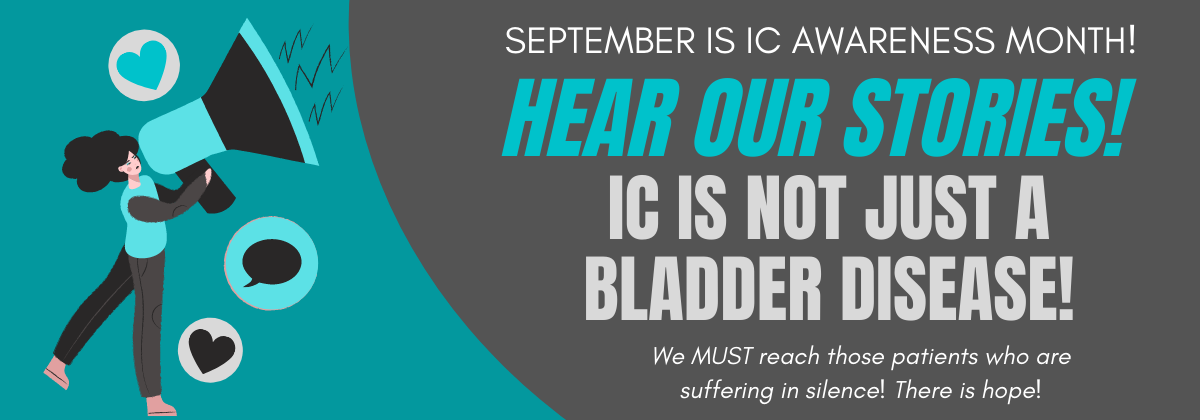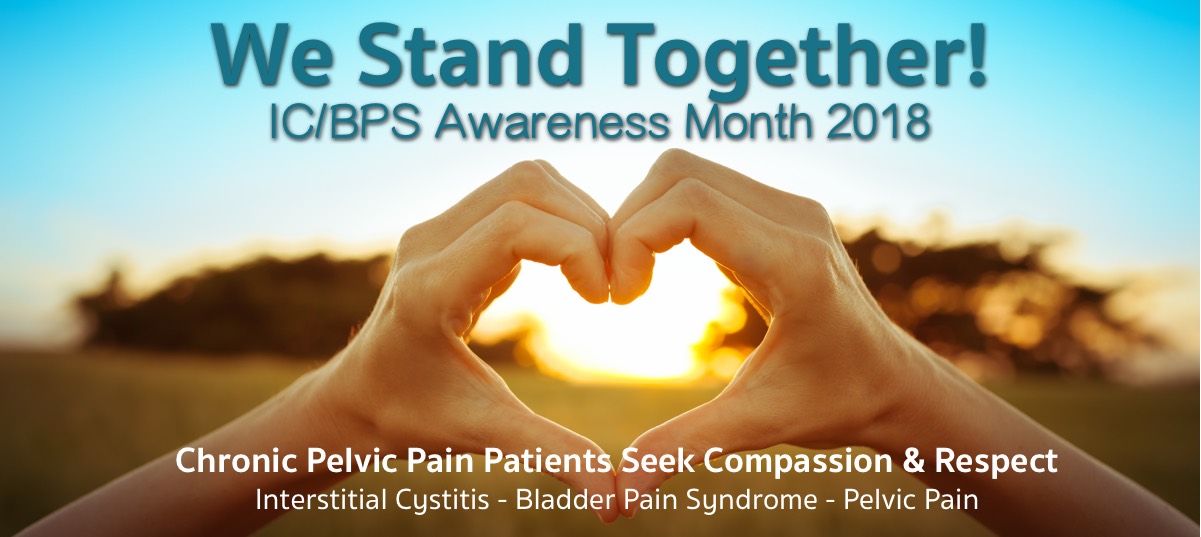IC/BPS Patients Refuse To Suffer In Silence
Demanding Compassionate and Humane Pain Care
FOR IMMEDIATE RELEASE – September 1, 2018
(Santa Rosa, CA) When a patient is told that their pain is “all in their head” it reveals something that many medical care providers are reluctant to admit. They have no clue why that patient is suffering from chronic pain. For the pelvic and bladder pain patient, this is not only commonplace but often spiced with insults. Grace* was told that her symptoms “would dissipate if she stopped sleeping around.” She was happily married and not having any affairs. Wendy* was told to have more sex with her husband. John* was instructed to “be a man” and not complain about his bladder pain. Sharon* was told her that her bladder pain was “not a real medical condition” despite having a video showing bleeding Hunner’s lesions in her bladder.
“The disrespect shown to patients who struggle with interstitial cystitis and chronic prostatitis has been nothing short of astounding” offered Jill Osborne, founder of the Interstitial Cystitis Network. The 2018 IC Awareness Month campaign asks for dignity, kindness and compassionate care for patients struggling with symptoms of urinary frequency, urgency, pressure and pain.
There is now hope for patients who were sent home to suffer in silence. “Many bladder pain patients resistant to bladder treatments are finding success with pelvic floor physical therapy” offered Ms. Osborne. “Similarly, when Hunner’s lesions are treated correctly with fulguration and/or steroid injection, pain can improve dramatically.” This supports the position of the American Urology Association who, in their Guidelines for IC/BPS, encourage physicians to revisit the diagnosis if a patient is not responding to treatment and/or struggling with worsening pain.
Dr. Christopher Payne, the former director of female urology at Stanford University, proposed five phenotypes that can help identify potential sources of pain, including:
- IC Subtype 1 – Hunner’s Lesions
- BPS Subtype 2 – Bladder Wall Driven
- BPS Subtype 3 – Pelvic Floor Driven
- BPS Subtype 4 – Pudendal Neuralgia
- BPS Subtype 5 – Central Sensitization.
Ms. Osborne continued “The Payne system works remarkably well. Many IC patients had no clue that their Hunner’s lesions should have been treated. They can now distinguish between bladder wall vs. pelvic floor muscle driven flares. They understand that tight muscles can compress nerves, thus triggering PGAD, sciatica and even a deep vibration in their pelvis. Patients with multiple pain disorders gain comfort and perspective in learning that hereditary can also play a role.”
One key goal of the 2018 IC Awareness Month campaign is to encourage education of pain specialists and medical care providers who encounter patients in crisis. The most vulnerable moment for bladder patients in pain is when they seek help during intense pain flares. Emergency room staff are rarely educated about IC/BPS and have accused patients of being drug addicts. They may have bleeding Hunner’s lesions. They may have muscles so tight that they are in urinary retention. These patients deserve a proper diagnostic workup and compassionate pain care.
Learn more about IC Awareness Month at: www.icawareness.org

